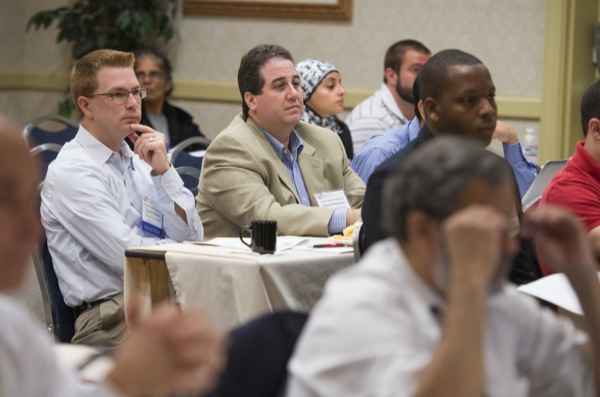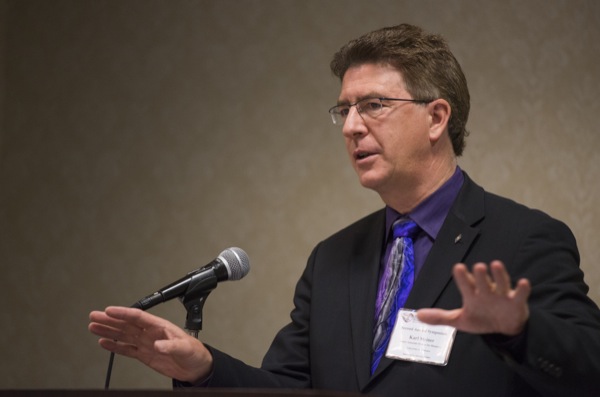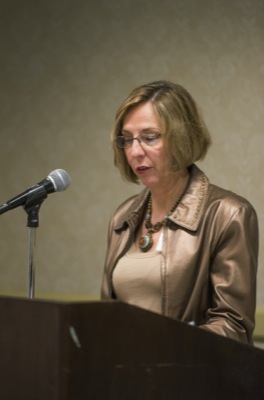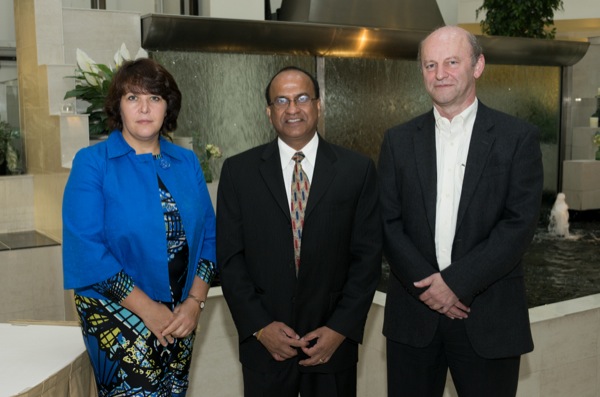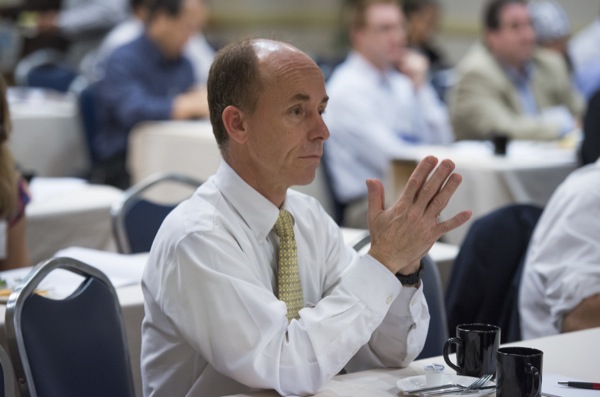Cardiovascular research
Delaware Cardiovascular Research Center holds second annual symposium
10:46 a.m., Nov. 8, 2012--The second annual Delaware Cardiovascular Research Center (DCRC) symposium sponsored by the University of Delaware’s College of Arts and Sciences, the Delaware Biotechnology Institute (DBI) and the Delaware INBRE was held on Friday, Oct. 19, at the Embassy Suites in Newark to a crowded house interested in the newest discoveries in the world of cardiovascular research.
More than 100 scientists and clinicians who are engaged in cardiovascular research attended the symposium from Delaware Valley institutions. The agenda included two keynote presentations as well as 11 scientific session talks. There was also a poster session during which 20 posters were presented.
Research Stories
Chronic wounds
Prof. Heck's legacy
The day began with a series of welcomes from notables at the University of Delaware who said they agreed that the DCRC — led by director Ulhas Naik, professor in UD’s Department of Biological Sciences — is bringing interdisciplinary work to the forefront of translational cardiovascular research.
“Since its inception, the DCRC has brought together an interdisciplinary group to enhance translational research from bench to bedside,” said Nancy Brickhouse, interim provost.
Following that sentiment, Charles Riordan, vice provost for research, said, “Research shows that the more challenging the problem is, the quicker and more successful the outcomes will be when approached by multi-disciplinary teams.”
“Today we have active collaborations between people who previously didn’t know each other,” added Karl Steiner, senior associate provost and principal investigator of Delaware INBRE. “The academic, public and private sectors are all working together on the challenge of cardiovascular disease like we did with cancer. I look forward to seeing the advances we make in cardiovascular research over the next 10 years.”
The morning keynote lecture featured Alan Daugherty, the Gill Foundation Chair of Preventive Cardiology, senior associate dean in the College of Medicine and director of the Saha Cardiovascular Research Center at the University of Kentucky, who spoke of the role of angiotensin II in atherosclerosis and aneurysms.
“A compound known since the 1950s for blood pressure regulation and water and sodium homeostasis may contribute to hypercholesterolemia-induced atherosclerosis,” said Daugherty. “We are currently researching this in mice being fed a Western diet for 12 weeks and have found that removing the AT1a receptors has reduced atherosclerosis.”
With dynamic speakers from UD, Nemours, the University of Pennsylvania, Temple University, Thomas Jefferson University and more, there was no shortage of insight during the two scientific sessions. Speakers enlightened the audience on everything from transforming growth factor beta as a biomarker for heart failure to platelet activation, signaling and regulation.
“The quality of the scientific presentations were on par with a Gordon Research Conference. It is exciting to see the participation of so many cardiovascular researchers,” said Naik. “Fifteen years ago, when I joined UD, I was often branded by NIH (National Institutes of Health) reviewers as isolated. I am not isolated any more. We are making great progress in advancing cardiovascular research across the Delaware Valley.”
Many attendees expressed similar feelings. “This is a great opportunity to interact with other scientists, and it’s important for us to hear the presentations about new research and discoveries,” said Sonali Barwe, Nemours researcher. “This symposium in particular is great because of the specific focus on cardiovascular research.”
The afternoon keynote brought insights from Tatiana Byzova, the Robert Canova Professor, vice chair in the Department of Molecular Cardiology and director of the Angiogenesis Center at the Cleveland Clinic. Byzova presented her work on postnatal angiogenesis and how it is linked to inflammation.
“We have identified that the molecular pattern of end products of lipid oxidation, generated during inflammation, is recognized by TLR2 on endothelial cells,” said Byzova. “Along with pathogen- and danger-associated molecular patterns, TLRs sense and respond to oxidation-associated molecular patterns, leading to an entirely unexpected VEGF independent pathway of angiogenesis.”
The symposium also included a poster session, where scientists from all over the state were invited to present their findings and network with colleagues.
John Kostyak, a postdoctoral researcher at Temple University who earned his doctorate at UD working with Naik, is studying cells that make platelets to discover how these cells can also squelch platelet production.
“The Philadelphia area is the hub of research on platelet biology function, so it’s really nice to present my work here, meet professors in the same field and share ideas,” he said.
A doctoral candidate in biology at UD, Aasma Khan, commented, “I came to interact with the large platelet community and listen to the good research being done by these professors. These talks give you the big picture as well as present new perspectives for your own research.”
Several awards were also given for best poster presentation, and the symposium concluded with a social hour. Poster winners are:
- Maurizio Tomaiuolo, first place, “Modeling Thrombus Formation in vivo.”
- Aasma Khan, second place, “Direct Association of PAR4 and P2Y12: Structural and Functional Analysis of a GPCR Heterodimer.”
- Sharmila Chatterjee, third place, “FGF-2-induced Angiogenesis via Integrin avb3 is Dependent on the pdz Motif and Tyrosine Residue in the Cytoplasmic Domain of JAM-A.”
For news and discoveries in the world of cardiovascular research, visit the DCRC website.
Article by Laura Crozier
Photos by Kathy F. Atkinson






